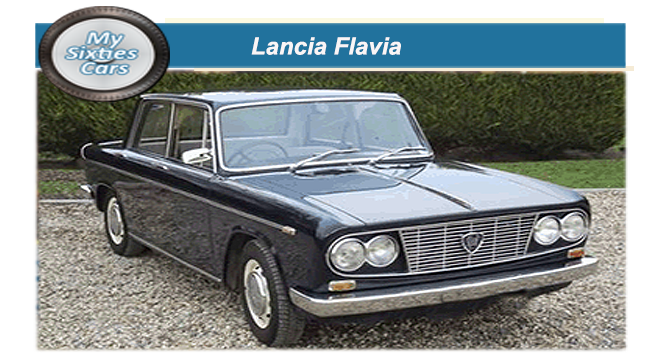
The Lancia Flavia, which made its public debut at the 1960 Turin Motor Show of 1960 was seen as the first of a new-generation of Lancia, designed to slot into the 1.5- to 2.0-litre class.
Like its predecessors, the Flavia was innovative in concept, with its front-wheel-drive provided by an innovative Lancia horizontally opposed four-cylinder engine.
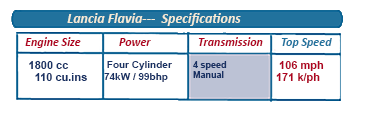 Launched originally in Berlina sedan format, styled in-house, with its boxy styling hiding the groundbreaking technical specifications that went into the Flavia.
Launched originally in Berlina sedan format, styled in-house, with its boxy styling hiding the groundbreaking technical specifications that went into the Flavia.
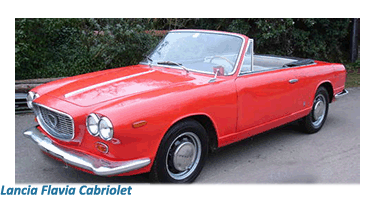 The Flavia was the first front-wheel drive Lancia, and it turned away from the usual V-shaped engine by using an alloy flat-four 'boxer' unit.
The Flavia was the first front-wheel drive Lancia, and it turned away from the usual V-shaped engine by using an alloy flat-four 'boxer' unit.
It did not stop there, as the Flavia fitted with disc brakes on all wheels, with vacuum assistance and a dual hydraulic system for extra safety.
On the downside, styling on the Flavia could best be described as ordinary.
With the sedan safely in production, coupe and convertible versions soon followed developed by Pininfarina and Vignale respectively.
To cover the market to its maximum, Lancia also introduced a couple of Flavia “specials” including an unusual looking coupe from the Zagato design studio.
![]()
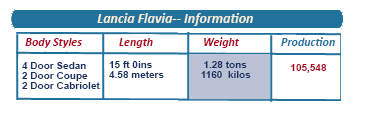 Lancia carried out the engineering and design work in-house, and the overall look was angular and conventional, although the quad headlights did add a little flair.
Lancia carried out the engineering and design work in-house, and the overall look was angular and conventional, although the quad headlights did add a little flair.
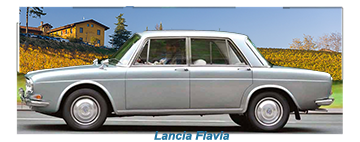 Pininfarina did better with the coupe version in 1961, and Vignale built an attractive convertible from 1962.
As was the usual case, it was Zagato who stole the limelight with the Flavia Sport of 1963. The uniquely styled Sport was highly individual yet strangely appealing.
The Flavia saloon remained in production for 14 years, during which time engine size went up to 1.8 litres (110 cu in) and then to 1991cc (121 cu in). The saloon was also restyled in 1967, and again in 1969 when the coupe version was also handed a minor revamp.
At the end of the Sixties, Lancia’s ongoing battle to earn a profit as an independent business began to reach crisis proportions, leading to Fiat stepping in to take control of the company.
Pininfarina did better with the coupe version in 1961, and Vignale built an attractive convertible from 1962.
As was the usual case, it was Zagato who stole the limelight with the Flavia Sport of 1963. The uniquely styled Sport was highly individual yet strangely appealing.
The Flavia saloon remained in production for 14 years, during which time engine size went up to 1.8 litres (110 cu in) and then to 1991cc (121 cu in). The saloon was also restyled in 1967, and again in 1969 when the coupe version was also handed a minor revamp.
At the end of the Sixties, Lancia’s ongoing battle to earn a profit as an independent business began to reach crisis proportions, leading to Fiat stepping in to take control of the company.
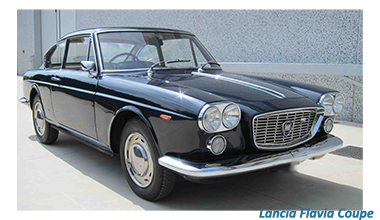 Fiat acted rapidly and ruthlessly, discontinuing the Vignale and Zagato versions without displaying too much sentiment.
The coupé and saloon versions were retained and even received a significant bodywork revamp, unveiled in March 1969 at the Geneva Motor Show.
A few months later, in early 1970, the Flavia name was dropped, with the model renamed the Lancia 2000.
Fiat acted rapidly and ruthlessly, discontinuing the Vignale and Zagato versions without displaying too much sentiment.
The coupé and saloon versions were retained and even received a significant bodywork revamp, unveiled in March 1969 at the Geneva Motor Show.
A few months later, in early 1970, the Flavia name was dropped, with the model renamed the Lancia 2000.






